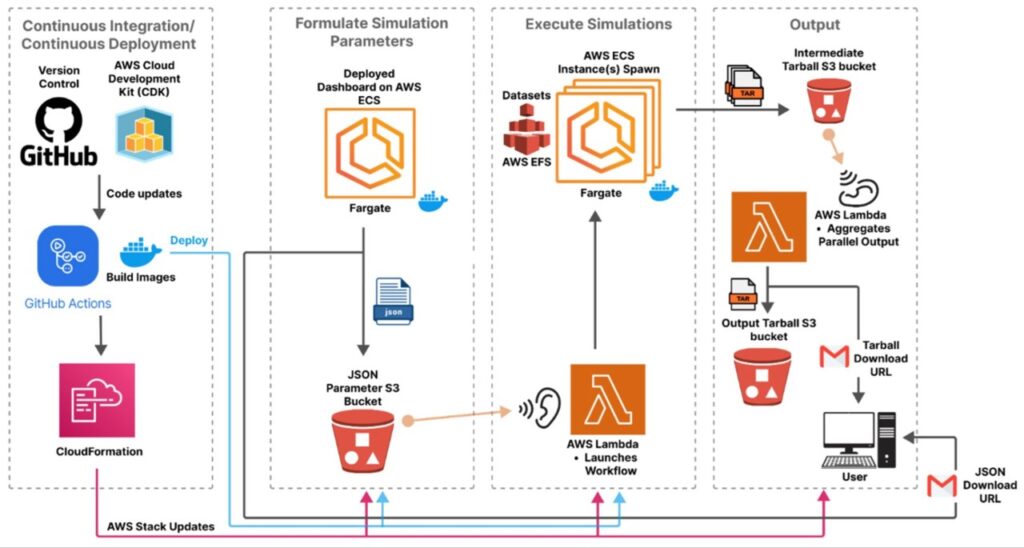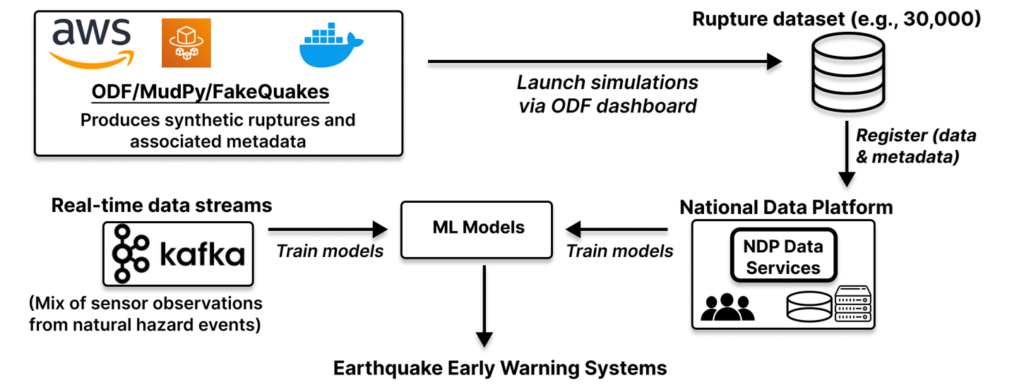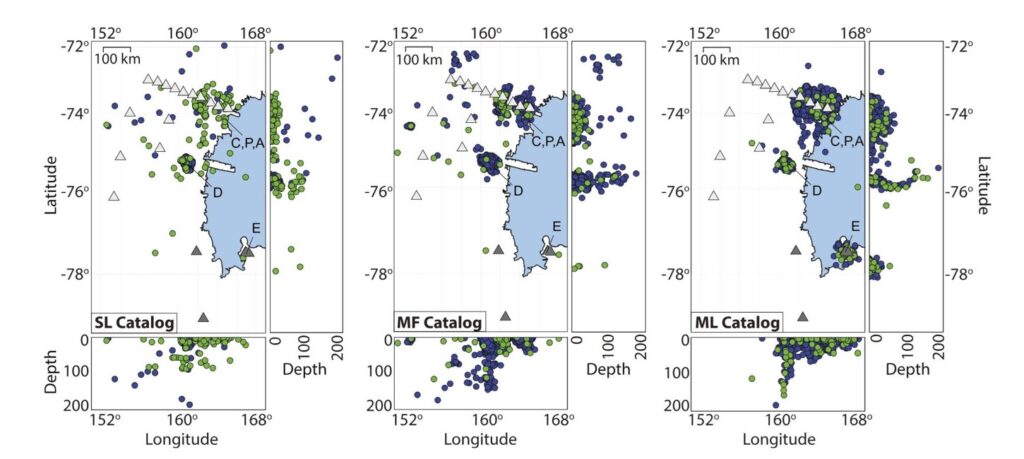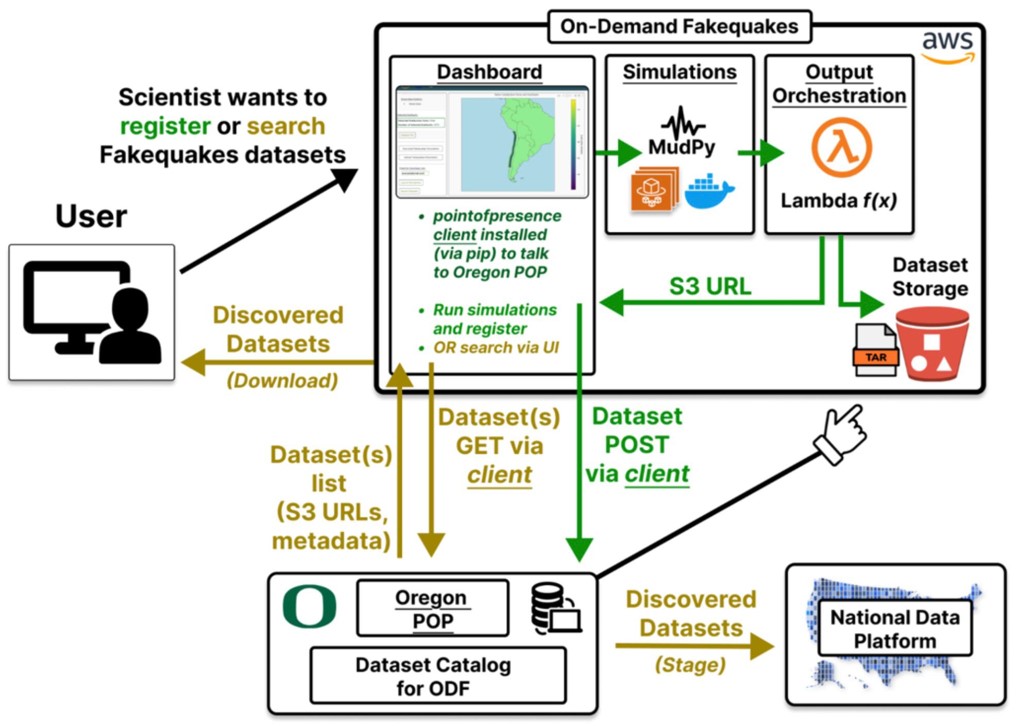Overview
On-Demand Fakequakes (ODF) is an easy-to-use web application for simulating earthquakes. With an interactive graphical interface, users can customize simulations without needing complex coding knowledge. ODF runs on the cloud, harnessing powerful computing resources to quickly execute simulations and deliver organized results. The platform integrates with the National Data Platform (NDP) for sharing and discovering simulation datasets.
Objective
ODF aims to make the earthquake simulation tool Fakequakes from MudPy accessible for all. Traditional use of Fakequakes requires downloading software, managing complex dependencies, and navigating a difficult codebase. ODF removes these barriers by providing a user-friendly web interface, where users can easily customize simulation parameters and select areas on an interactive globe.

Key Features
- Intuitive Interface: Customize earthquake parameters through simple sliders, text boxes, and maps.
- Cloud Computing: Utilize Amazon Web Services (AWS) to execute simulations in parallel, making the entire process faster and more efficient.
- Dataset Platform: Integration with NDP enables sharing and discovering earthquake datasets, complete with detailed metadata for easy data searches.

Challenges
- Containerization: Adapting the Fakequakes software for smooth cloud deployment.
- Cloud Workflow: Building a reliable and fail-safe workflow using AWS that can run multiple simulations at once.
- NDP Integration: Ensuring secure data sharing with NDP.
Alignment with NDP
ODF directly supports NDP by using its sciDX stack for data registration and discovery. The integration ensures that datasets generated by ODF can be easily accessed for broader scientific research and new workflows.


Collaborators
ODF is a joint effort involving the SCI Institute at the University of Utah, the University of Oregon, CRESCENT, NDP, and NSF. It aims to support NASA scientists and researchers interested in earthquake data.
Technologies Used
- Frontend: Built with Python and Plotly Dash for an interactive and dynamic web interface.
- Backend & Cloud Workflow: Uses AWS services like ECS Fargate, Lambda, IAM, and S3 for cloud deployment and processing.
- Containerization: Docker is used to manage software dependencies.
- CI/CD: GitHub Actions ensure smooth and continuous updates to the AWS workflow.
- NDP Integration: The sciDX API is leveraged to link with NDP resources.

ODF in Action
The diagram illustrates the ODF workflow: from user input through the web interface to cloud-based simulation execution, culminating in organized results stored and shared via NDP.
Summary
ODF is transforming earthquake research by making simulations more accessible and faster to run, while also enabling dataset sharing across the scientific community. It fosters collaboration, advances research capabilities, and lowers the entry barrier for earthquake simulation studies.



